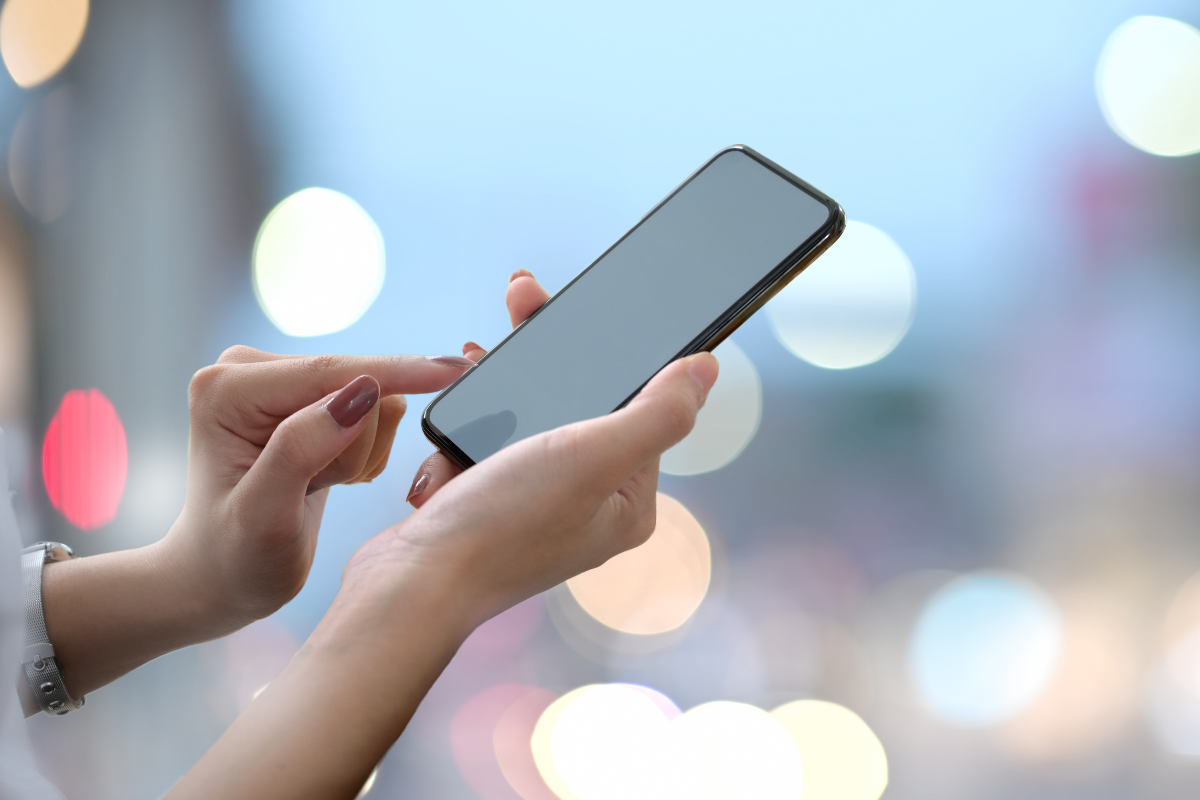I have a love/hate relationship with my phone. One the one hand, it’s a powerful tool where I can easily access any type of information, any time. On the other hand, it’s an addiction that sucks me into the black hole of doom scrolling. Over the past few years, I’ve realized that my phone use was problematic and that it was starting to affect me in ways I did not like.
As a first step towards managing my phone use, I decided to uninstall Facebook from my phone. I knew that I was wasting a lot of time mindlessly looking at my feed. I soon discovered that I was using my phone a little less. Only a little less, because, let’s face it, there are a myriad of shiny apps to ensnare us.
Science has shown that excessive cell phone has many negative impacts on our health. These include:
- Poor sleep,
- Decreased social interactions and skills,
- Increased eye strain and muscle fatigue,
- Increased cortisol levels.
Too much time on devices
Uninstalling Facebook was a good first step, but it wasn’t enough. I still spent a lot of time mindlessly using my phone. One day, I decided to take a look at my phone’s digital well-being settings and was shocked to see just how much I was using the phone. It was unsettling, actually. I had noticed that my ability to focus was not what it used to be. I often zoned out of conversations. I did not like feeling or behaving like this. I knew that I wanted to address the cause of the issue. Being the proactive person that I am, I knew it was time to address the issue. I took a two-pronged approach: daily habits and periodic social media cleanses.
This is part one of my approach to manage my time on devices, especially the phone.
Like my approach to fitness, I decided to take small, consistent steps to change my behaviour.
Daily habits
- Do not disturb! I have set my phone to “do not disturb” from 10 pm until 6 am. This setting turns my phone screen monochrome and blocks all notifications, except those from my favourite contacts. It’s not nearly as enticing to look at a black and white screen, leading to less mindless scrolling. Scrolling is an easy, brainless thing to do. It also adds no value to my life, my health, or my overall well-being. I also don’t need the blue light from my phone since it affects my sleep. And I’ve learned that, at the end of the day, I don’t really miss anything by not checking my phone or mindlessly scrolling.
- Ditch the ‘gram! Instagram is the biggest culprit of my phone addiction. It’s addictive and it shows me exactly what I want to see: adorable dogs and gardening accounts. I was spending a lot of time on that silly app. Something had to change. So, a few months ago I set a daily timer for Instagram. Once the time runs out, it’s no insta until tomorrow.
- Block! I also decided to block the app for 3 hours a day. From 8 am to 11 am, I can’t use Instagram, Gmail, and Messenger. Is it easy? Nope. It is, however, enlightening and frightening to see how much I was using these silly apps and unlocking my phone throughout the day.
Small steps, big gains
It’s been over a month since I started taking these steps. It was hard at first, but with time I find that I’m no longer mindlessly unlocking my phone. I do slip up. Now when I pick up my phone, I ask myself “what am I doing? do I need to look at my phone at this moment?” Nor surprisingly, the answer is often, no.
I’ve also gained a lot of time for me. I spend my evenings working out, doing hobbies, reading, or connecting IRL with friends.
Sources:
Dopamine, Smartphones, and you
Cell phone usage – how much is too much?
Excessive Smartphone Use Is Associated With Health Problems in Adolescents and Young Adults




Love this post as I too struggle with this – IT IS AN ADDICTION! Thanks for the encouragement to make intentional moves to control it instead of being controlled by it
It absolutely is an addiction, and like all addictions, it’s harmful even if we don’t realize it. I’ve found that taking consistent small steps is an effective way for me to change habits.